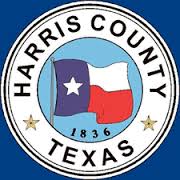From the Chron: Harris County faces challenge, opportunity managing $2.5B flood bond program. I want to focus on this bit.
Jim Blackburn, co-director of the Severe Storm Prediction, Education, and Evacuation from Disasters Center at Rice University, estimates the bond program will complete a third of the flood protection measures Harris County needs. He said leadership from the incoming Commissioners Court, which now will be dominated by Democrats and include a new county judge and Precinct 2 commissioner, will be essential to getting the county the rest of the way.
“We are in a good position, but it’s not an end position,” Blackburn said. “It’s the beginning for the conversation that needs to occur, which is, ‘where are we headed?’”
[…]
The flood control district has issued bonds several times to pay for improvements, including $425 million in the 1980s, but by the 1990s was spending half its revenue on debt service. The district downsized its workforce and opted to pay for future projects up front, which significantly decreased the county’s investment in flood protection to around $15 million per year.
In 2001, after Tropical Storm Allison flooded 73,000 county homes, Harris County significantly increased the district’s funding to $120 million, split evenly between operations and capital projects. That annual sum has remained the same since then, its purchasing power diminished each year by inflation.
Blackburn said Commissioners Court and local members of Congress during this period focused too narrowly on building transportation infrastructure to keep pace with rapid population growth, at the expense of flood control.
“We were, basically, more interested in building the Grand Parkway than we were in fixing Addicks and Barker,” Blackburn said, referring to the west Houston reservoirs the Army Corps listed in 2009 among the most dangerous in the country.
Harris County Judge Ed Emmett acknowledged in September that the county could have done more on flood protection in the decade before Harvey, but said he doubted the public would have supported a bond to pay for it.
“Sure, you could say the leader is supposed to get out in front,” Emmett said. “But people were not writing me saying we’ve got to raise taxes and do more for flood control.”
Precinct 3 Commissioner Steve Radack, the longest-serving member of the court, predicted a flood bond proposal during the dry years of the 2010s would have gone down in “sizzling defeat.” He rejected the idea that commissioners erred by neglecting to increase the district’s budget in the past.
“There are people who believe we’ve underfunded indigent health care, underfunded roads, underfunded basically every single thing,” he said. “You’ll never be able to make everyone happy.”
In the nine years between Hurricane Ike in 2008 and Harvey, Commissioners Court kept the flood control district property tax rate at roughly 3 cents per $100 of assessed value, less than 5 percent of the overall county tax rate. That figure omits about 2 cents the county carries on its books in the form of debt service on old flood control bonds.
The rate devoted to flood control was two and a half times higher from 1995 through 2000; it took until this year for rising property values to let the district collect more in property taxes — its main revenue source — than it did in 2000.
It was not until Harvey, the wettest storm researchers have ever documented in the United States, that Commissioners Court members saw the urgency in funding the flood control district.
Would it have been difficult to sell a flood control bond ten or fifteen years ago, after Allison but before we started getting walloped on an annual basis? Probably, but you know, Commissioners Court could have tried. They could have engaged with the public about the need to take flood control seriously, and upgrade and improve our infrastructure to do it, and they could have done that even outside the context of a two-month political campaign for a bond. They could have supported other policies that would have boosted flood control efforts. And if they had done these things and encountered resistance, and maybe lost a flood bond referendum and even put their own political careers in jeopardy, well, that’s the nature of public service. As John Culberson can testify, there are downside risks to not taking that kind of action.
Also, too: People, such as Jim Blackburn, have been warning for decades that rampant sprawl into the western and northwestern parts of the county, and the paving over of the Katy Prairie that accommodated it, were bad for flood control. We could have made different choices, including choices that allowed for growth but prioritized growth in a more sustainable fashion. The fact that we’re getting the bill for it now doesn’t mean we couldn’t have taken action then.
Also, too, too: I’ve said this before, but maybe these stories should include reactions and quotes and whatnot from our incoming county executives? You know, the ones who are going to have to take the next steps in this process? Just a thought.

